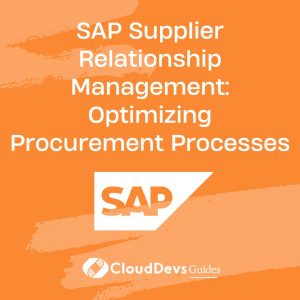SAP Project System: Managing Projects and Resources Effectively
In today’s fast-paced business environment, effective project management is crucial for success. Organizations need a robust system to plan, execute, and monitor their projects while efficiently allocating resources. This is where SAP Project System (SAP PS) comes into play. In this comprehensive guide, we’ll explore SAP PS and how it can help you manage projects and resources effectively, ensuring your projects are delivered on time and within budget.

1. Understanding SAP Project System
1.1. What is SAP Project System?
SAP Project System, often referred to as SAP PS, is an integral part of the SAP ERP (Enterprise Resource Planning) suite. It provides a comprehensive solution for managing projects and project-related activities within an organization. SAP PS enables project managers to plan, execute, and control projects seamlessly, ensuring they align with the company’s strategic goals and objectives.
1.2. Key Features of SAP Project System
SAP PS offers a wide range of features to support project management, including:
- Project Planning: Create detailed project plans, including work breakdown structures (WBS), milestones, and dependencies.
- Resource Allocation: Efficiently allocate and manage resources, both human and material, to ensure optimal utilization.
- Cost Management: Track project costs in real-time, helping you stay within budget and identify cost overruns early.
- Integration: Seamlessly integrate with other SAP modules, such as SAP Financials and SAP Material Management, for a holistic view of your projects.
- Reporting and Analytics: Generate customizable reports and dashboards to gain insights into project performance.
- Workflow Automation: Streamline project-related processes and approvals through workflow automation.
- Document Management: Store and manage project-related documents and files within the system.
2. Getting Started with SAP Project System
2.1. Implementing SAP Project System
To leverage the benefits of SAP PS, you need to implement it within your organization. The implementation process typically involves the following steps:
2.1.1. Define Project Structures
Begin by defining the project structures, including the project definition, work breakdown structure (WBS), and project network. This step forms the foundation for your project planning and execution.
abap
DATA: lv_project_definition TYPE ps_project_definition,
lv_wbs_element TYPE ps_wbs_element,
lv_project_network TYPE ps_project_network.
lv_project_definition = 'PRJ_001'.
lv_wbs_element = 'WBS_001'.
lv_project_network = 'NET_001'.
CREATE OBJECT lo_project
EXPORTING
project_definition = lv_project_definition
wbs_element = lv_wbs_element
project_network = lv_project_network.
2.1.2. Resource Allocation
Allocate resources to your project tasks based on skill sets and availability. SAP PS allows you to optimize resource utilization by matching skills to tasks.
abap
DATA: lv_resource TYPE ps_resource,
lv_task TYPE ps_task.
lv_resource = 'John Doe'.
lv_task = 'Task_001'.
CREATE OBJECT lo_resource_allocation
EXPORTING
resource = lv_resource
task = lv_task.
2.1.3. Cost Planning and Monitoring
Set up cost planning for your project to ensure it stays within budget. SAP PS provides tools to estimate and track project costs effectively.
abap
DATA: lv_project TYPE ps_project,
lv_cost_element TYPE ps_cost_element.
lv_project = 'PRJ_001'.
lv_cost_element = 'COST_001'.
CREATE OBJECT lo_cost_planning
EXPORTING
project = lv_project
cost_element = lv_cost_element.
2.1.4. Integration with Other Modules
Integrate SAP PS with other SAP modules, such as SAP Financials and SAP Material Management, to enable seamless data flow and ensure accurate financial reporting.
abap
DATA: lv_project TYPE ps_project,
lv_material TYPE ps_material.
lv_project = 'PRJ_001'.
lv_material = 'MAT_001'.
CREATE OBJECT lo_material_integration
EXPORTING
project = lv_project
material = lv_material.
3. Project Execution and Monitoring
Once your project is set up in SAP PS, you can start executing and monitoring it. Here are some key activities during this phase:
3.1. Project Progress Tracking
Use SAP PS to track the progress of your project tasks and milestones. This helps you identify any delays or issues early and take corrective actions.
abap
DATA: lv_task TYPE ps_task,
lv_progress_percentage TYPE ps_progress_percentage.
lv_task = 'Task_001'.
lv_progress_percentage = 75.
UPDATE OBJECT lo_task_progress
EXPORTING
task = lv_task
progress_percentage = lv_progress_percentage.
3.2. Resource Management
Continuously monitor resource allocation and availability to ensure that resources are optimally utilized throughout the project lifecycle.
abap
DATA: lv_resource TYPE ps_resource,
lv_project TYPE ps_project.
lv_resource = 'John Doe'.
lv_project = 'PRJ_001'.
UPDATE OBJECT lo_resource_allocation
EXPORTING
resource = lv_resource
project = lv_project.
3.3. Cost Control
Regularly review project costs and compare them to the planned budget. SAP PS provides real-time cost tracking and alerts for cost overruns.
abap
DATA: lv_project TYPE ps_project,
lv_actual_cost TYPE ps_actual_cost.
lv_project = 'PRJ_001'.
lv_actual_cost = 10000.
UPDATE OBJECT lo_cost_tracking
EXPORTING
project = lv_project
actual_cost = lv_actual_cost.
4. Project Closure and Reporting
Once your project is completed, it’s essential to close it properly and generate reports for analysis and decision-making.
4.1. Project Closure
Close your project in SAP PS by marking it as complete. This step ensures that all project-related activities are finalized.
abap
DATA: lv_project TYPE ps_project.
lv_project = 'PRJ_001'.
UPDATE OBJECT lo_project_closure
EXPORTING
project = lv_project
status = 'Closed'.
4.2. Reporting and Analytics
Use SAP PS’s reporting and analytics capabilities to generate various reports and dashboards to assess project performance and make informed decisions.
abap
DATA: lv_project TYPE ps_project.
lv_project = 'PRJ_001'.
REPORT lo_project_performance
EXPORTING
project = lv_project.
5. Benefits of SAP Project System
Implementing SAP PS can bring numerous benefits to your organization:
- Efficient Resource Utilization: SAP PS helps you allocate resources optimally, reducing idle time and improving productivity.
- Cost Control: Real-time cost tracking and reporting enable you to manage project budgets effectively and avoid cost overruns.
- Improved Collaboration: Integration with other SAP modules fosters collaboration and ensures data consistency across the organization.
- Accurate Reporting: Generate customized reports and dashboards to gain insights into project performance, enabling data-driven decision-making.
- Streamlined Processes: Workflow automation reduces manual intervention and accelerates project-related processes.
6. Challenges in Implementing SAP Project System
While SAP PS offers significant benefits, there can be challenges in its implementation:
- Complexity: SAP PS can be complex to implement, requiring skilled consultants and comprehensive training for users.
- Integration: Integrating SAP PS with other SAP modules may require additional customization and effort.
- Cost: The initial investment in SAP PS implementation and ongoing maintenance costs can be significant.
- Change Management: Users may need time to adapt to the new system and processes, requiring effective change management strategies.
Conclusion
SAP Project System is a powerful tool for managing projects and resources effectively within your organization. By implementing SAP PS, you can streamline project management, allocate resources efficiently, and gain real-time insights into project performance. While there may be challenges in its implementation, the benefits far outweigh the drawbacks. Invest in SAP PS to drive project success and achieve your organization’s strategic goals.
Table of Contents








